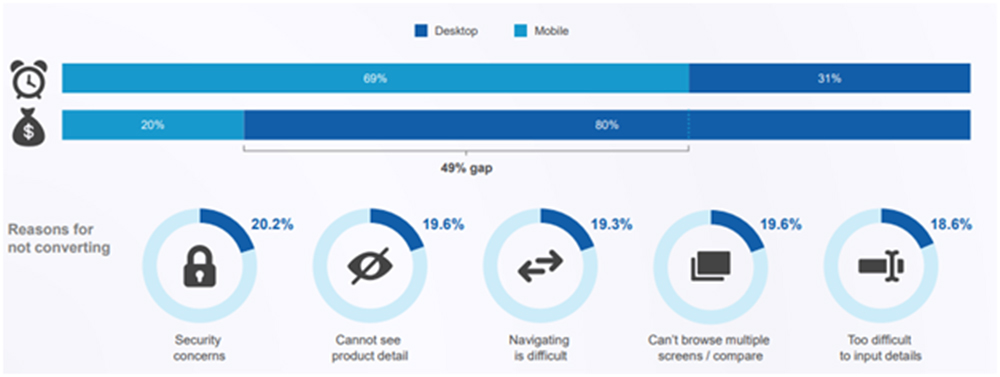November 26, 2018
Ever since Adobe acquired Magento in June 2018, the company has been constantly improving its game to become more valuable for the market segment. This e-commerce technology has always been known for being more developer-friendly than for its ease-of-use for store owners, thereby this acquisition is predicted to improve Magento’s success rates in that area as well.
After only a few months of the acquisition, the duo has been in the news for a new initiative that really shows their intention for becoming more user-friendly. In the beginning of this year’s holiday season, the company launched a new program with its partners to boost mobile sales. The focus of the initiative was around retailers and small businesses.
Along with some industry partners, namely PayPal, Shopgate, and Hi Conversion, and 15 other integrators, the company has been working to optimise the sales platform for improved conversion rates on mobile devices and to help their cause, they have even conducted 250 experiments to collect data from merchants from around the world.
Now the program has over three million data points that can be used by the merchants to help improve their store’s sales over this holiday season by leveraging better buying experiences. The data from the experiments have been anonymized and is to be shared over the Magento community so that everyone can benefit from it.
It is helpful to remember that despite the growing use of mobile devices, particularly smartphones, on eCommerce websites, the conversion rates are showing significant improvement. As per a private survey[2], around 80% of internet users are surfing the web through their smartphones. These stats contrast with the e-commerce sales on mobile devices that only accounts to only about 2.86% conversion rates [3].
On the subject, Peter Sheldon, the Senior Director of Commerce Strategy at Magento wrote, “While smartphones continue to gain share as a primary channel for consumers to shop online, the ratio of mobile views to conversions lags in comparison to the desktop.”
This so-called ‘m-commerce gap’ has been studied many a time by private teams of researchers and they have found 5 major reasons for the same, namely, security concerns, inability to see the product details, difficulty in navigation, tricky data input methods, and inability to browse multiple tabs.

Another team of researchers also found that mobile devices, particularly smartphones, have the highest cart abandonment rates at 85.65%[4]. All these issues were hindering m-commerce’s growth on the mainstream mobile web, compelling a vast majority of businesses to optimise their e-commerce websites for mobile devices.
Therefore, this initiative by Magento is all worthy of praise. Not to mention, its effect on Adobe’s position in the market which, from now on, will be evaluated by many after this out-of-the-box step by the company. As Magento partner Shopgate’s VP of global business development, Tiffany Spizzo, says, “Together with Magento, merchants can now offer a seamless digital experience across desktop, mobile web and native mobile apps, whether solving for complex B2B process challenges or expanding B2C omni channel strategy,” [5]Now efforts will be made to streamline the marketing and customer retention efforts of Magento store customers’ by providing new solutions at multiple touch points. Solutions like push notifications, armed with demographic and user behaviour metrics, are bound to bring positive effects in the world of Magento m-commerce. However, these effects are bound to take a while to act on.
If you’re a small business owner, running an eCommerce store on Magento, we have an interim solution for you. Our dedicated team of Magento Developers work collaboratively with our team of mobile app developers. Their collaboration has already helped many of our clients in establishing an encompassing experience for their customers. Not to mention, the insights from our in-house team of digital marketing analysts also help build a platform inherently optimised for sales, cross-selling, upselling, and conversions.
Resources: